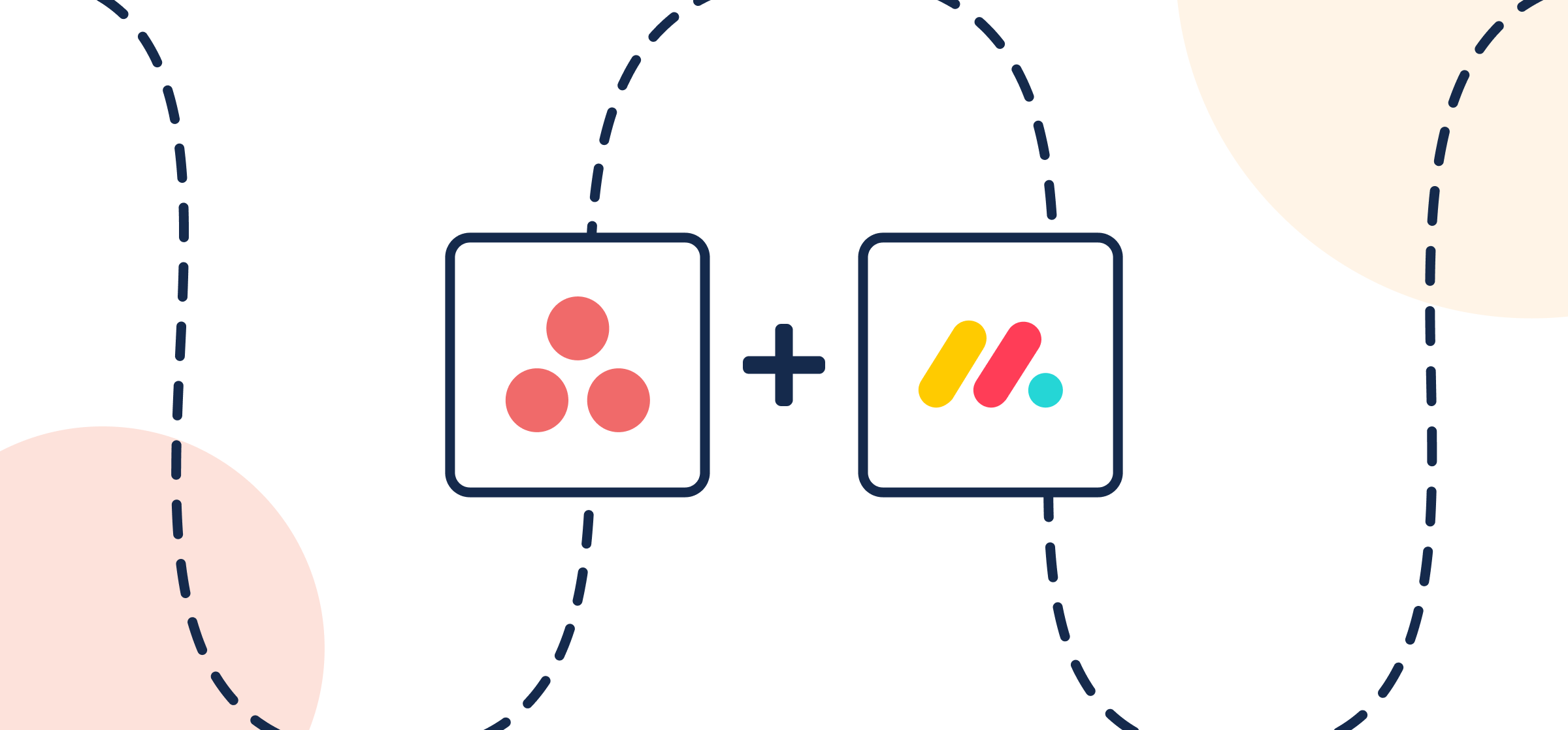How to Connect monday.com and Asana with Automated 2-Way Sync
In this guide, you’ll learn how to sync tasks from boards in monday.com to projects in Asana using Unito’s two-way no-code integration. By connecting these tools, you’ll be able to ensure that all your teams can work together, no matter which tool they prefer. No manual updates and no copy-pasting necessary.
You can use this integration for much more than that too, like connecting software development tools to your project management suite, your CRM to a contact management tool, and more.
In this article:
- Step 1: Connect Asana and monday.com to Unito
- Step 2: Set a flow direction between your project and board
- Step 3: Pick rules to filter out some tasks from syncing
- Step 4: Link fields between Asana and monday.com
- Step 5: Launch this Asana monday.com integration
Why sync Asana and monday.com with Unito?
Asana and monday.com are some of the strongest project management tools you can get. With their dedicated features, you can run all kinds of projects. But what if your teams aren’t using just one tool? Or what if you’re working with an external company that prefers one over the other?
Unito is the best no-code solution for syncing tasks between Asana and monday.com. It takes just a few minutes to set up, it keeps everything up to date in both tools automatically, and it has integrations for the rest of your tool stack.
Here’s how easy it is to set up this flow.
Step 1: Connect Asana and monday.com to Unito
- (optional) add Unito to your board from the monday.com marketplace.
- Continue from monday.com or go to the Unito App and click +Create Flow.
- Then, click Start Here to connect your tools.
- Select +Add a tool to this flow in either column and choose monday.com.
- Then +Choose account to specify your monday.com account, and pick the board you’re working in.
- Repeat steps 3 and 4 to connect Asana with Unito and follow the on-screen instructions.
- Click Confirm.

Step 2: Set a flow direction between your project and board
Flow direction determines how new tasks are created by Unito. So, a one-way flow from Asana to monday.com would automatically add tasks or items in monday.com when you manually create tasks in Asana, but not the other way around.
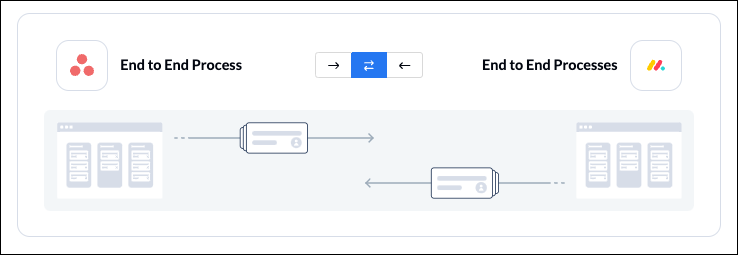
Note: Later, you’ll be able to add field mappings with their own sync direction to control how real-time updates occur.
Select Confirm when you’ve chosen a flow direction.
Step 3: Pick rules to filter out some tasks from syncing
Unito’s default rules will sync all tasks between your Asana project and monday.com board. If you want to filter out some of them, you can add additional rules based on fields.
You could, for instance, set up a rule that filters out all Asana tasks that don’t have a specific label or only sync monday.com tasks in certain groups.
All you need to do is click Add a new rule, select a field and the value(s) you want to include (e.g.specific Asana tags).
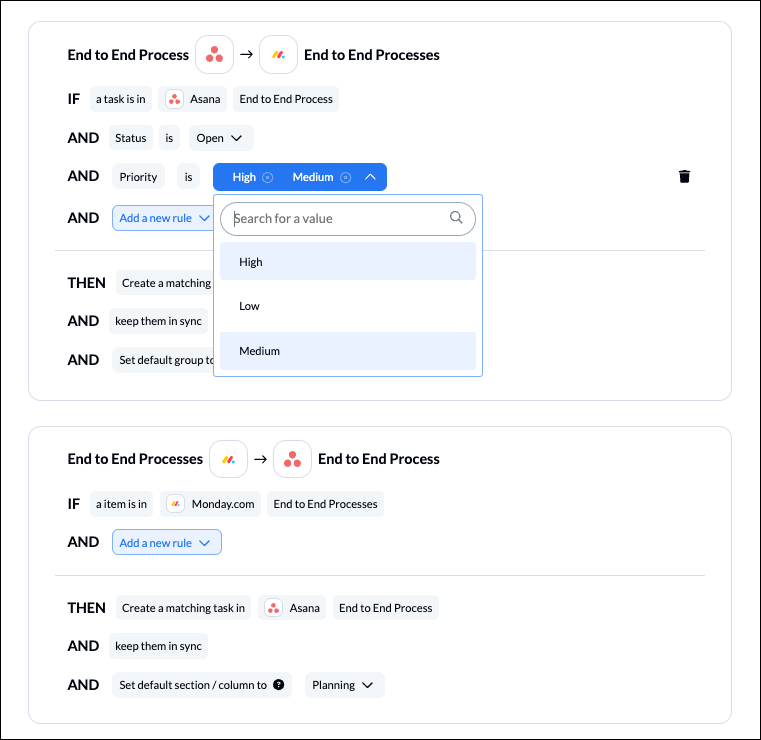
You can learn more about setting up rules here.
Step 4: Link fields between Asana and monday.com
Fields represent the details of your Asana and monday.com tasks. Text, single-select, assignees, and emails are all examples of fields you can map with Unito.
When you see this screen, we recommend mapping automatically so you can start from a pre-built template which can then be modified.
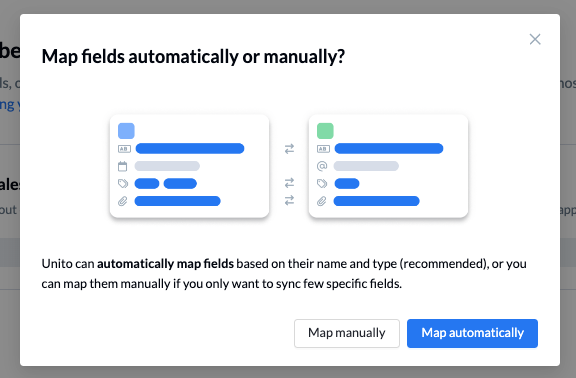
Select +Add mapping, then Select a field in both tools to pair them together.
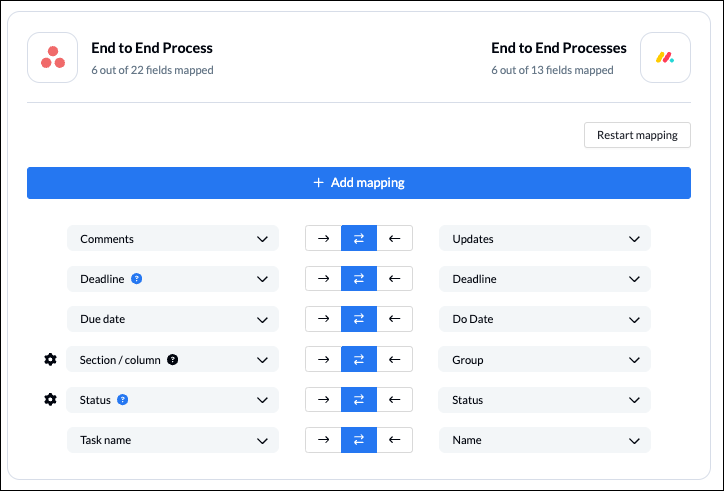
Gear icons indicate options for customization. Click on the icon to modify values or see other options. Usually, this will apply to fields like dropdowns or single and multi-select fields.
Grouped values vs. individually paired values
Within this sub-menu of field mappings, you can link values together. Values represent the different states of single or multi-select fields (e.g., types of status, priority, a team or department within your organization, stages of a deal, etc.).
This is an example of values that have been paired up individually:
That means, in the example below, if the status is set to “stuck” in one tool, it will be assigned the “stuck” status in the other:
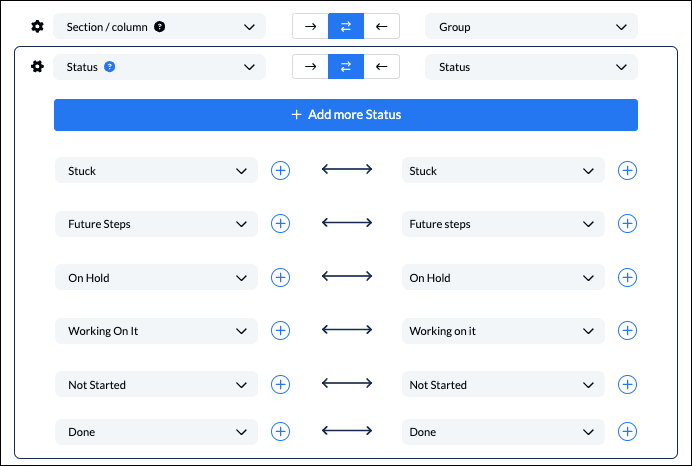
Here’s an example of “grouped” values:
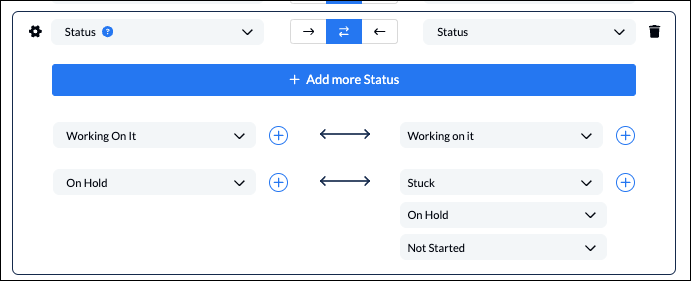
In the above example, if the status on the right changes between stuck, on hold, or not started, it will remain on hold in the status on the left. If the status on the left is ever set to on hold it will only switch to stuck in the status on the right because that status is first in the list of grouped values.
Meanwhile, if a status is ever set to working on it in either tool, it will also be set to working on it in the other.
Find out more about setting field mappings.
Step 5: Launch this Asana monday.com integration
And that’s it! You’ve just built a flow between Asana and monday.com. Congratulations!
If you followed the steps above, your flow will now:
- Automatically create new tasks in one tool when they’re created in the other.
- Keep fields up to date in both tools.
If you have any questions, please don’t hesitate to reach out and let us know.
What’s next after integrating monday.com with Asana using Unito?
Now that you’ve set up your integration between monday.com and Asana, you can replicate this process to connect all kinds of boards and projects across all your workflows. Otherwise, here are some other ways you can use Unito with monday.com and Asana:
- Automatically create follow-up tasks in monday.com from a Notion CRM
- Sync Google Calendar events to your monday.com boards
- Sync GitHub issues to your Asana projects
- Send data to Google Sheets from Asana or monday.com
- Delegate tasks from monday.com to Trello, Jira or HubSpot
- Use Unito to build a master project in Asana to centralize tasks from multiple workspaces
- Sync Intercom conversations with monday.com tasks
- Connect Asana and Smartsheet

